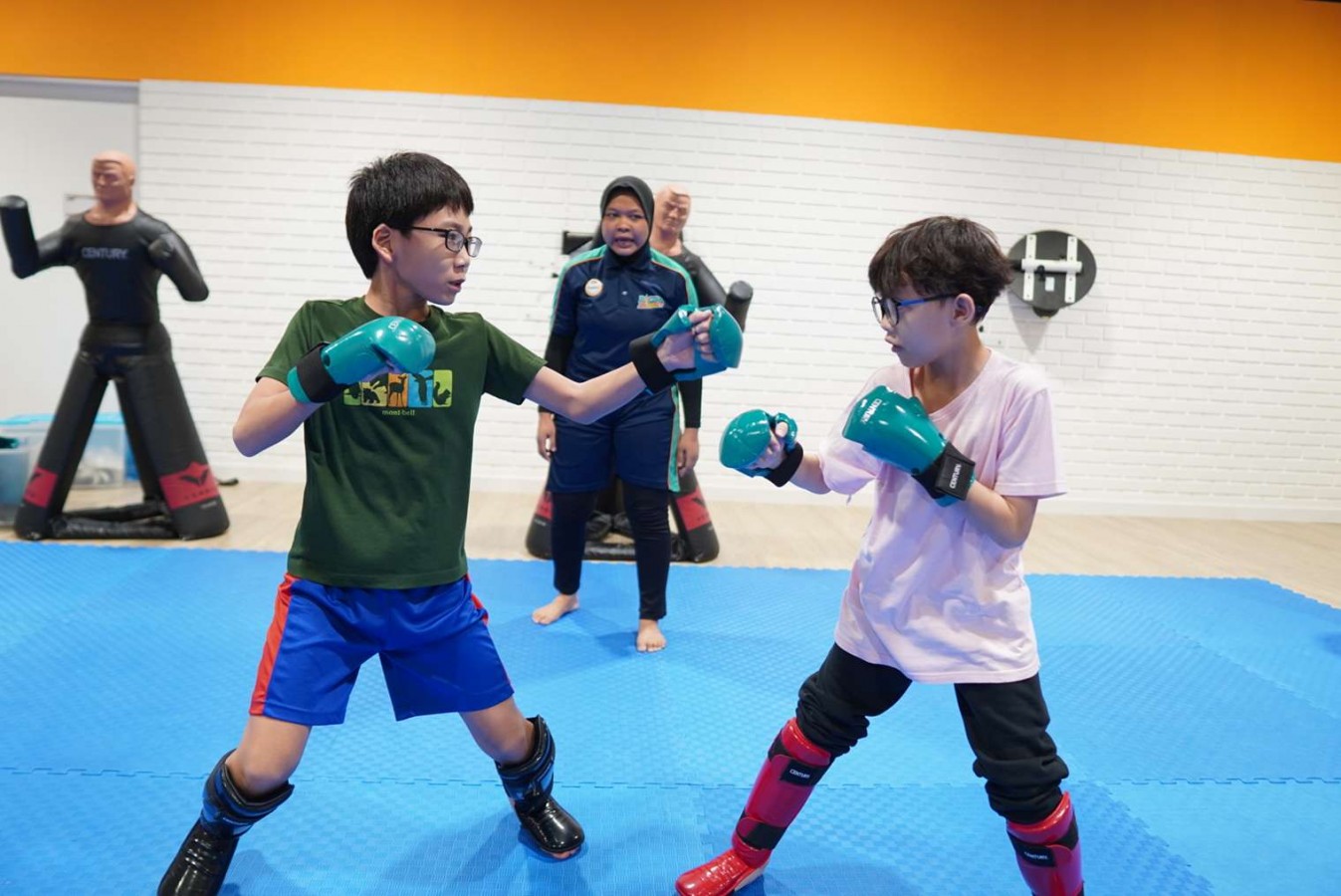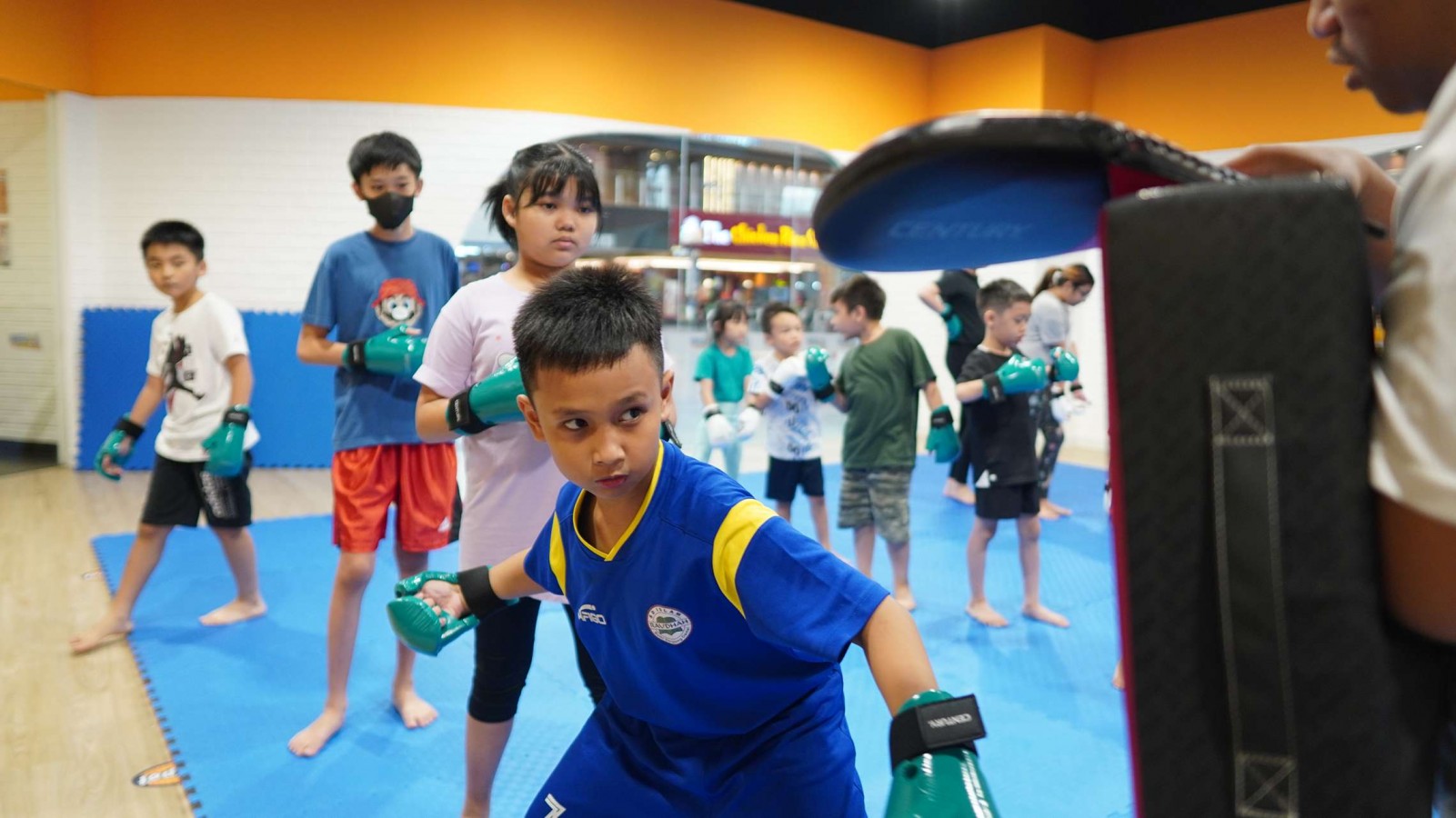The Bridge Kickover Breakdown: A Complete Guide to a Gymnastics Essential
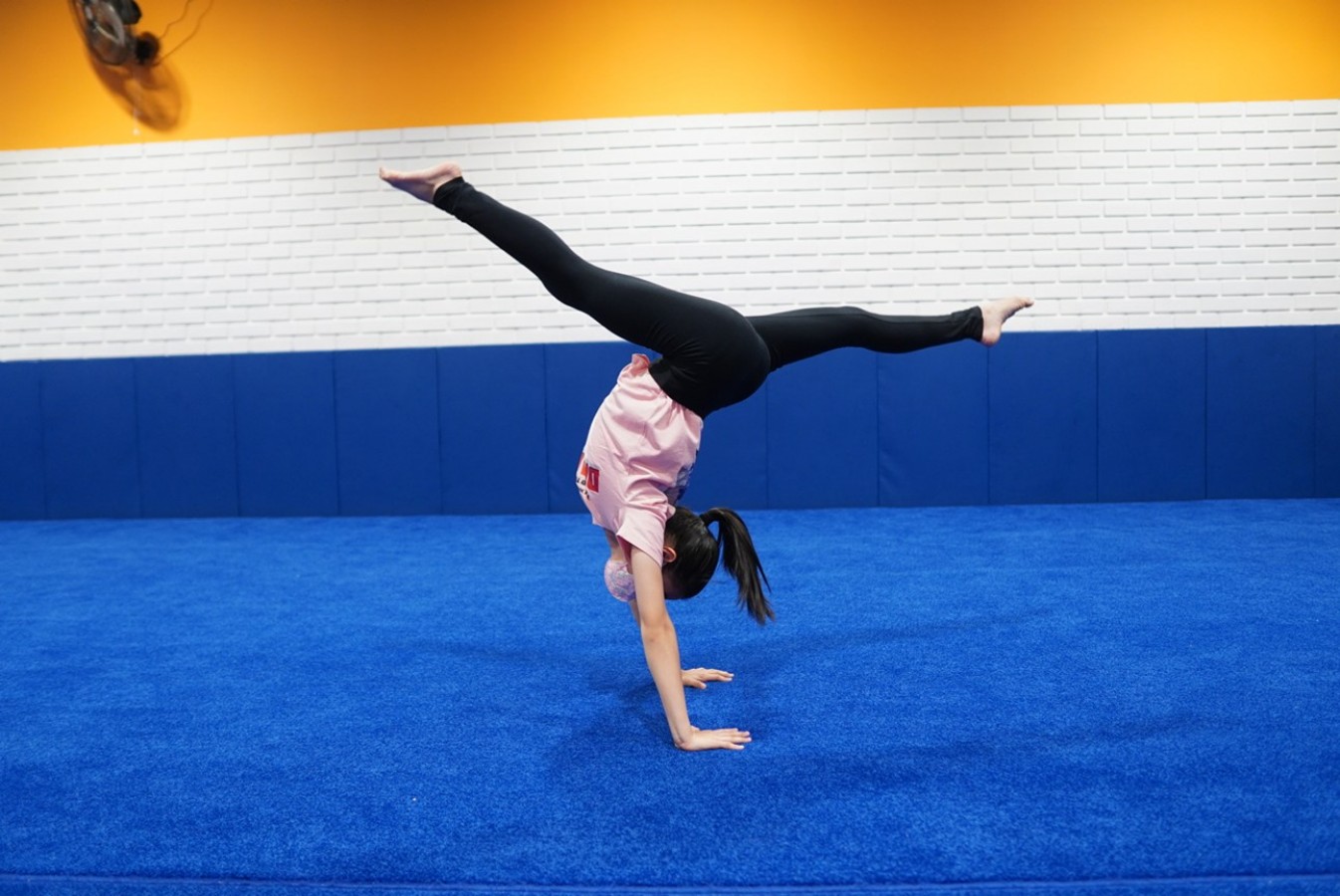
When a young gymnast smoothly kicks their legs over from a bridge position, it is called a bridge kickover. While it looks simple, it’s actually a fundamental building block in gymnastics that requires strength, flexibility, and coordination.
In this guide, we’ll explore exactly what a bridge kickover is, how to do it step by step, which muscles are involved, and the best exercises and drills to help master it. Let’s check it out!
What Is a Bridge Kickover?
A bridge kickover is a skill where the gymnast starts in a bridge gymnastics position, then kicks one leg into the air and uses momentum to bring the other leg over, finishing in a standing position.
It might look like just a flashy trick, but it’s much more than that:
- It develops core strength and flexibility, essential for more advanced gymnastics.
- It’s often one of the first “big kid” skills young gymnasts learn, boosting their confidence.
- It serves as a foundation for more complex moves like back walkovers, back handsprings, and eventually back tucks.
Muscles Used in a Bridge Kickover
Executing a smooth bridge kickover relies on several muscle groups working together in perfect coordination. Here’s a breakdown of the key players and how each muscle group contributes to the movement.
1. Core Muscles (Abs and Obliques)
.png)
The core is the powerhouse of the bridge kickover. Strong abdominal and oblique muscles stabilize the body and keep the torso from wobbling while in the bridge position.
2. Shoulders and Arms
.png)
The shoulders and arms act as the foundation in a bridge kickover. They carry a significant amount of body weight while holding the bridge and must be strong enough to resist collapsing.
3. Leg Muscles (Quads, Hamstrings, Glutes)
.png)
The legs are the driving force behind the bridge kickover. The quadriceps and hamstrings work together to create power during the push-off and kick. The kicking leg generates momentum by swinging upward, while the supporting leg provides the final push to lift the hips higher and shift the body weight toward the hands.
4. Back Muscles (Spinal Erectors)
.png)
The spinal erectors, which run along the length of the spine, are crucial for maintaining the arched shape of the bridge. These muscles control the smoothness of the motion as the body transitions from the ground to upright.
5. Hip Flexors

The hip flexors often go unnoticed, but they are one of the most important muscle groups in the bridge kickover. Located at the front of the hips, these muscles help lift the legs and swing them overhead with enough speed to complete the move.
How to Do a Bridge Kickover: Step-by-Step
Learning a bridge kickover requires patience and practice. Here’s a breakdown of the move:
1. Start in a Bridge Position
Lie on your back with knees bent and feet flat on the floor, shoulder-width apart. Place your hands beside your ears, fingers pointing toward your shoulders. Push through your arms and legs to lift your body into a bridge. Your back should form a smooth arch.
2. Choose a Lead Leg
Most gymnasts have a dominant leg (like being right-handed). Lift that leg slightly to prepare for the kick.
3. Kick One Leg Up
Swing your lead leg straight up toward the ceiling with energy and control. Try to keep your arms strong and your head neutral (don’t drop it back too far).
4. Push Off the Supporting Leg
As your lead leg rises, push through the foot of your supporting leg to help your hips lift higher. Your weight should shift over your shoulders and hands.
5. Bring the Second Leg Over
Once the lead leg is up, your other leg follows naturally. Land gracefully in a standing position with arms raised overhead, finishing strong.
Exercises and Drills to Master a Bridge Kickover
Like most gymnastics skills, the bridge kickover doesn’t happen overnight. It requires a combination of strength, flexibility, balance, and confidence. Below are some of the best exercises and drills to prepare the body and mind for a successful bridge kickover.
1. Bridge Holds
.jpg)
Holding a bridge position is the foundation of the kickover. To practice, lie on your back, push up into a bridge, and try to hold the pose for 15–30 seconds at a time. Focus on keeping your arms straight and pushing your chest toward the wall behind you.
2. Leg Kicks in Bridge

Once comfortable holding a bridge, the next step is to practice controlled leg lifts. While in the bridge, lift one leg slightly off the ground and hold it in the air for a few seconds before switching legs.
This drill improves balance and mimics the beginning of the kickover motion. It also strengthens the hip flexors and trains the body to stabilize on one leg while the other kicks upward.
3. Hip Lifts
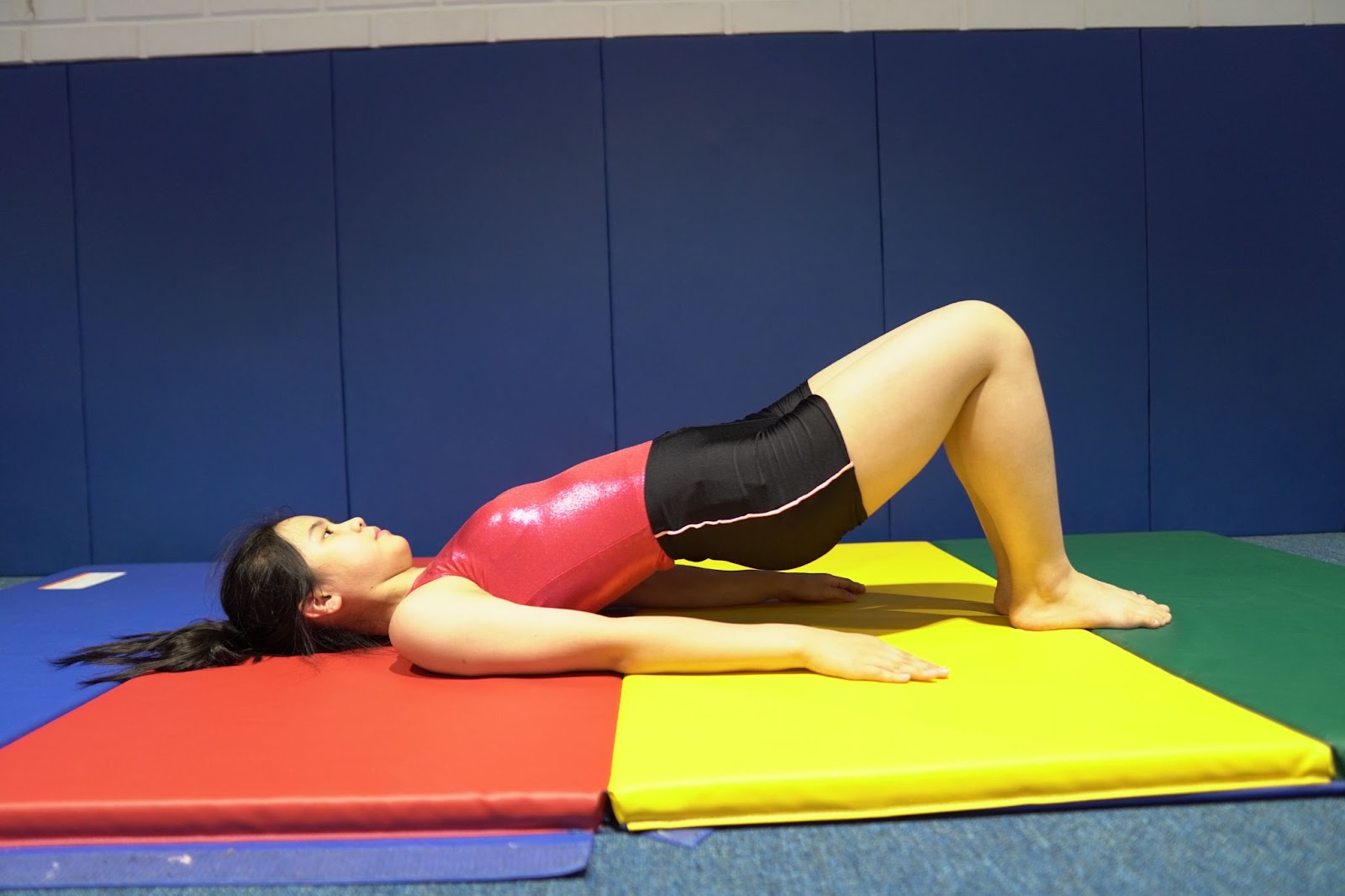
Hip lifts are an excellent way to strengthen the muscles required to push the hips high during the kickover. Start by lying on your back with knees bent and feet flat on the floor. Lift your hips up toward the ceiling, squeeze your glutes at the top, then lower back down. Repeat for several reps.
4. Split Stretches
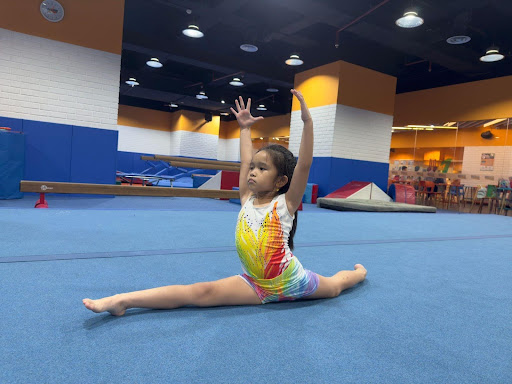
Flexibility plays a big role in whether a gymnast can achieve a smooth kickover. Practicing split stretches helps loosen the hip flexors, hamstrings, and quads. The more flexible the legs are, the easier it becomes to lift and swing them overhead without strain.
5. Wall Walks
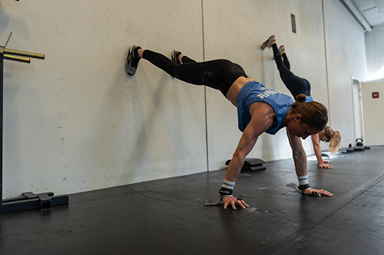
Wall walks are an excellent drill to build shoulder strength, flexibility, and confidence when moving backward. Start by standing facing a wall, then carefully walk your hands down the wall into a backbend, and walk them back up to standing.
6. Downhill Kickovers

Practicing on an incline, such as a wedge mat or even a soft hill outdoors, makes the kickover easier to achieve. The downhill slope gives gymnasts extra momentum to swing their legs overhead, reducing the strength required in the early stages of learning.
This drill helps young gymnasts experience the motion of a full kickover without as much effort, building muscle memory and confidence. Once they can perform the skill downhill, it becomes easier to transition to a flat surface.
Advance Your Skill at Rockstar Academy!
If you want to take your child’s abilities to the next level, consider enrolling them in a gymnastics program at Rockstar Academy, the best Sports & Performing Arts Academy that offers a wide range of physical activity programs.
Our gymnastics curriculum is designed to help students grow through Gymnastics Testing, which supports progression to higher levels and prepares athletes for National & International competitions, as well as the Gymnastics Elite Championships and RockOlympics.
With the addition of their Dream Team curriculum, students are given even greater opportunities to reach their potential. With 180 minutes of high-energy sessions led by our experienced, professional instructors, this program pushes students to reach their full potential.
Best of all, Rockstar Academy offers a free trial class, so you can see the benefits firsthand before committing. Contact Rockstar Academy today!
FAQ
At what age can kids usually learn a bridge kickover?
Most children begin attempting bridge kickovers between ages 5–7, but it depends on strength, flexibility, and confidence. Some may be ready earlier, while others need more time to build foundational skills.
Is a bridge kickover safe for beginners?
Yes, with proper supervision and spotting, it’s safe. Kids should only try it on soft surfaces (like mats) and ideally with guidance from a gymnastics coach.

